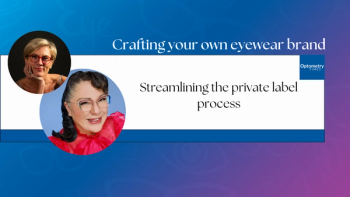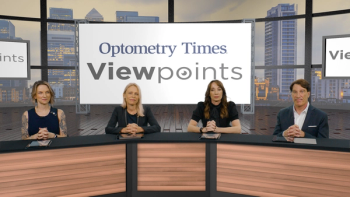
ASCRS 2023: Use of intraoperative OCT during glaucoma surgery
Inder Paul Singh, MD, sat down with Sheryl Stevenson, Group Editorial Director, Ophthalmology Times®, to discuss his presentation on intraoperative OCT during glaucoma at the ASCRS annual meeting in San Diego.
Inder Paul Singh, MD, sat down with Sheryl Stevenson, Group Editorial Director, Ophthalmology Times®, to discuss his presentation on intraoperative OCT during glaucoma at the ASCRS annual meeting in San Diego.
Video transcript
Editor’s note: This transcript has been edited for clarity.
Sheryl Stevenson:
We're joined today by Dr. Inder Paul Singh who will be presenting at this year's ASCRS. Welcome to you. We're delighted to learn more about your talk about intraoperative OCT during glaucoma, can you tell us more about that.
Inder Paul Singh, MD:
Thank you for having me appreciate that. I'm a geek, I'll be honest with you. And I love all the cool technologies that we have. But you know, there's something about new technology that is impressive, but does it really help us clinically. That's really what I love to see.
You know, using the new technology of intraoperative OCT, we have something called the rescan, which allows us intraoperatively, to use OCT to see structures of the eye that we never had a chance to see before intraoperatively.
So in the glaucoma world that we see, there's a number of different procedures that we do that involve different structures that we're kind of sometimes guessing where things are happening. So for instance, one of the most common procedures I do is something called Canaloplasty. We're actually taking a catheter, and we're basically dilating the Schlemm's canal and using viscoelastic, to push viscoelastic, to stretch the trabecular meshwork, open up the canal, and even the distal collector channels.
Now, historically, a lot of times we'd say, Yeah, we're pushing viscoelastic. But is it really doing what we think is doing? Is it really stretching open the trabecular meshwork? Is it opening up the collector channels, and even when we're leave the catheter out of the eye, is it actually enlarging the canal?
Well, now with intraoperative OCT, we can see real time when we're pushing viscoelastic, the canal going, *WOOP* getting bigger, and we can see the trabecular meshwork being stretching, and the distal collector channels opening up. So to actually see real time evidence of what we're doing and the amount of viscoelastic, is correlated with how much we're seeing of that dilation, is really unique and kind of interesting to see as well. Other ways we can also see interesting things.
For instance, when we do things like [inaudible] once in awhile we have to loosen up some scar tissue. Well, sometimes you can't see the actual, let's say implant, underneath the conjunctiva, or the [inaudible] that things get thick. Well, we can use intraoperative OCT to actually see the stent under the tissue to see kind of where that stent is. And also are we loosening up some of that fibrosis to see the bleb formation improve as well.
We have other technologies, stenting we've been able to see too for instance, the Hydrus Microstent. We've been able to show with the Hyrdus the scaffolding that's occurring. When you put the stent in there, you can do an intraoperative OCT and see it scaffolds where it is. and even beyond it, you can see what happens when you put irrigation and aspiration in the eye and see what happens to the canal and the flow going into the canal as well. So I think, a number of different procedures and technologies, we're able to now identify structures.
But really also real time demonstrate the benefits of these different procedures and what we're doing in these glaucoma patients as well. So kind of fun, exciting times and we'll do more with this, we'll see what happens but it's kind of exciting for now.
Newsletter
Want more insights like this? Subscribe to Optometry Times and get clinical pearls and practice tips delivered straight to your inbox.












































.png)


